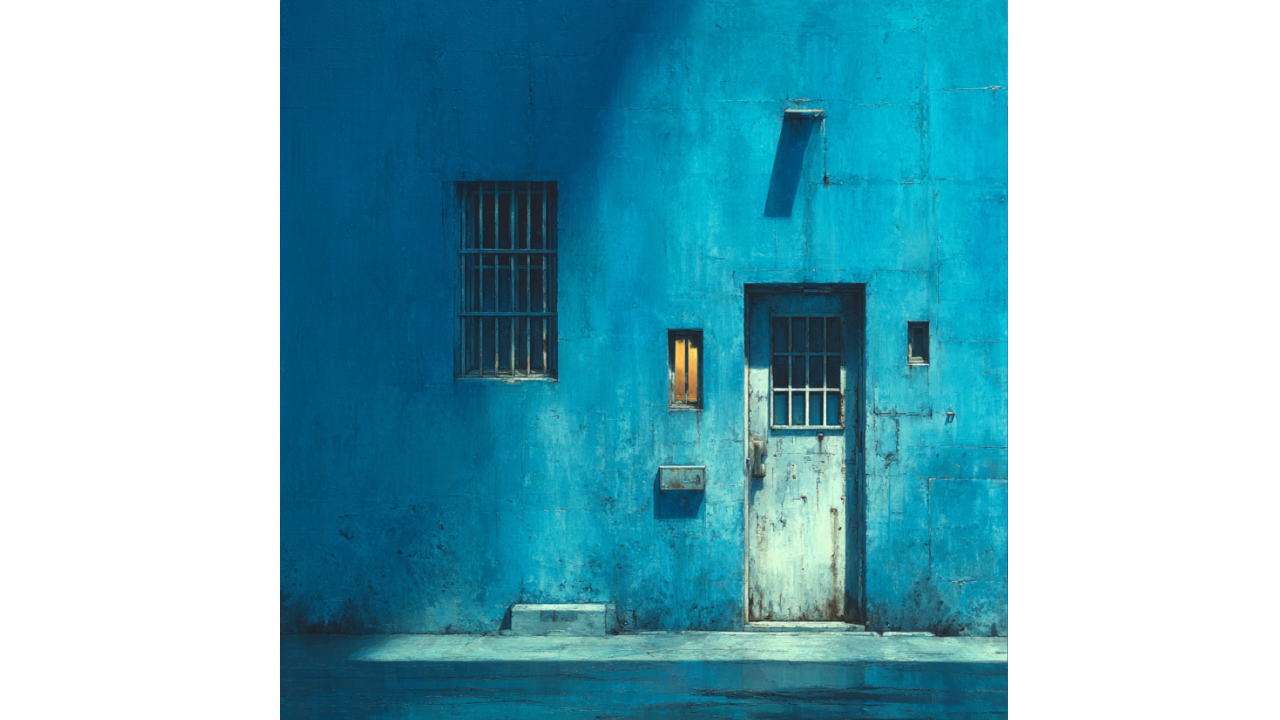Trump's AI Deepfake Rant Isn't Funny—It's a Preview of Our Regulatory Failure
We're supposed to laugh, apparently. The President of the United States shares an AI-generated deepfake showing Senate Minority Leader Chuck Schumer...
5 min read
 Writing Team
:
Oct 20, 2025 3:19:55 PM
Writing Team
:
Oct 20, 2025 3:19:55 PM
-Oct-20-2025-07-19-48-4527-PM.png)
Let me get this straight: The President of the United States generated an AI video showing himself wearing a crown, piloting a fighter jet, and dropping human waste on millions of Americans exercising their constitutional right to peaceful assembly. And we're supposed to debate whether this is "satire."
There's nothing satirical about a head of state depicting himself as royalty while literally defecating on his own citizens.
On Saturday night, as an estimated 7 million Americans participated in "No Kings" protests across 2,700 locations—potentially the largest single-day demonstration since Earth Day 1970—Donald Trump posted a 19-second AI-generated video to Truth Social. In it, he appears as a crowned fighter pilot in a jet labeled "King Trump," swooping over New York City while releasing brown sludge onto peaceful demonstrators below. The video specifically targeted real protest footage, including left-wing influencer Harry Sisson, melding actual rally scenes into AI-generated filth.
This wasn't a meme. This was the President of the United States using deepfake technology to fantasize about assaulting protesters. With excrement. While wearing a crown. Set to "Danger Zone."
The fact that we even have to explain why this is reprehensible says everything about how far democratic norms have eroded.
Let's talk about that crown. The "No Kings" protests explicitly opposed perceived authoritarianism and Trump's policies targeting immigrants and vulnerable communities. The demonstrators' core message was a rejection of monarchical power and an affirmation of constitutional democracy. They literally named the movement "No Kings."
Trump's response? "Actually, yes—King Trump." The video wasn't subtle. The jet was branded. The crown was golden. The message was explicit: I am above you, and I will soil you for opposing me.
Vice President JD Vance amplified the message by posting his own AI clip showing Trump in crown and robes, wielding a sword while Democratic leaders including Nancy Pelosi bowed before him. The White House—the actual White House—posted a montage on BlueSky showcasing "Trump's most notorious online moves," including a doctored racist image of House Minority Leader Hakeem Jeffries in a sombrero.
This is not normal political communication. This is authoritarian aesthetics wrapped in irony poisoning, where every grotesque abuse of power gets dismissed as "just trolling" while the message lands exactly as intended: I am king, you are subjects, and dissent will be met with contempt.
According to research on authoritarian communication strategies, leaders who regularly mock protesters and depict opposition as deserving punishment are engaged in dehumanization campaigns that precede more concrete authoritarian actions. The "it's just a joke" defense is a feature, not a bug—it provides plausible deniability while normalizing the underlying message.
The technology itself matters here. AI-generated video has already been weaponized for election interference, non-consensual pornography, and manufactured evidence. Studies on deepfake impact show that even when viewers know content is synthetic, it still influences perception and memory, especially when shared by authoritative sources.
When the President of the United States uses this technology—not to educate, not to inform, but to depict himself attacking citizens—he's legitimizing deepfakes as political weapons. He's normalizing the manipulation of reality for partisan advantage. And he's demonstrating to every authoritarian-curious government worldwide that synthetic media can be deployed against domestic opposition without meaningful consequences.
This isn't Trump's first AI video stunt. He's previously shared AI-generated content showing luxury resorts in Gaza conflict zones, cabinet officials as the Grim Reaper taunting Democrats, and various other surreal digital provocations. Each one pushes the boundary of what's acceptable. Each one tests how much manufactured reality the public will tolerate from its leaders.
The answer, apparently, is: all of it. Because we've been conditioned to treat every transgression as "just Trump being Trump," every norm violation as merely "provocative," every authoritarian signal as "owning the libs." The sewage video is shocking until it isn't, outrageous until it's old news, unacceptable until it's forgotten by Wednesday.
Here's what actually happened on Saturday: Over 7 million Americans participated in peaceful demonstrations. New York City alone saw more than 100,000 protesters. Police reported zero protest-related arrests. No violence. No property damage. No incidents requiring intervention.
These were citizens exercising the most fundamental rights guaranteed by the Constitution—freedom of speech, freedom of assembly, freedom to petition the government for redress of grievances. The First Amendment exists specifically to protect exactly this kind of civic engagement.
And the President responded by generating a video depicting himself dumping sewage on them.
Not on violent rioters. Not on insurrectionists. On peaceful protesters. On Americans whose only transgression was disagreeing with him. On citizens whose participation in democracy apparently merits mockery, contempt, and digital excrement from the most powerful office in the nation.
According to research on protest suppression tactics, dehumanizing protesters through mockery and symbolic violence is a documented precursor to actual physical suppression. Leaders who consistently depict opposition as deserving punishment, even "jokingly," are conditioning their supporters to accept escalating responses to dissent.
The predictable defense has already emerged: It's satire. It's trolling. It's not meant to be taken seriously. Stop being so sensitive.
But satire requires more than just "I was kidding." Satire punches up at power, not down at citizens. Satire exposes hypocrisy and challenges authority, it doesn't reinforce existing power dynamics. Satire doesn't typically involve the world's most powerful person depicting himself as royalty while defiling protesters.
What Trump posted isn't satire. It's authoritarian fantasy dressed in meme aesthetics. It's contempt for democratic participation wrapped in "Danger Zone." It's the President of the United States telling millions of peaceful Americans that their concerns deserve to be buried in sewage.
And calling it "humor" doesn't make it less dangerous. If anything, the joke format makes it more insidious—harder to criticize without seeming humorless, easier to dismiss without engaging the substance, more shareable across platforms where the underlying message metastasizes regardless of intent.
For anyone working in communications, marketing, or brand strategy, the sewage video offers a masterclass in how not to engage with criticism. When your customers—or in this case, your constituents—raise concerns, you don't respond by depicting them covered in filth. You don't mock their participation. You don't signal that their voices deserve contempt rather than consideration.
But more broadly, this incident reveals the complete collapse of institutional guardrails around AI-generated content. There are no rules. There is no accountability. The President can use deepfake technology to depict himself attacking citizens, and the only consequence is that it becomes Monday's news cycle before everyone moves on.
For brands considering AI tools—especially generative video—the lesson is clear: if there are no ethical boundaries at the highest levels of power, you cannot trust that vendors have implemented adequate safeguards at any level. The Sora 2 MLK incident showed that even well-resourced companies will ship dangerous capabilities without proper restrictions. The sewage video shows that even presidents will deploy those capabilities against vulnerable targets.
The technology is powerful. The guardrails are nonexistent. And the people who should be modeling responsible use are instead demonstrating exactly how AI tools can degrade democratic discourse.
Trump's video wasn't subtle because it didn't need to be. The crown communicated supremacy. The sewage communicated contempt. The fighter jet communicated power. The targeting of real protest footage communicated that opposition will be punished, even if only symbolically. For now.
This is how democracy dies—not with a bang but with a deepfake, not with tanks but with sewage, not with explicit threats but with "satirical" videos that normalize authoritarian aesthetics until they stop being satire at all.
Seven million Americans peacefully protested. Their President responded by depicting them as targets deserving filth. And we're debating whether it's funny.
It's not funny. It's terrifying. And the fact that we can't agree on that basic assessment is the whole problem.
Need communication strategies that respect your audience rather than mock them? Winsome Marketing's growth experts help you build trust through authentic engagement, not authoritarian fantasies.

We're supposed to laugh, apparently. The President of the United States shares an AI-generated deepfake showing Senate Minority Leader Chuck Schumer...

We witnessed something genuinely horrifying this weekend. Not a horror movie, not a dystopian novel, but the sitting President of the United States...

We just witnessed the birth of democracy's most dangerous phrase: "Just blame AI." President Trump's contradictory statements about a White House...